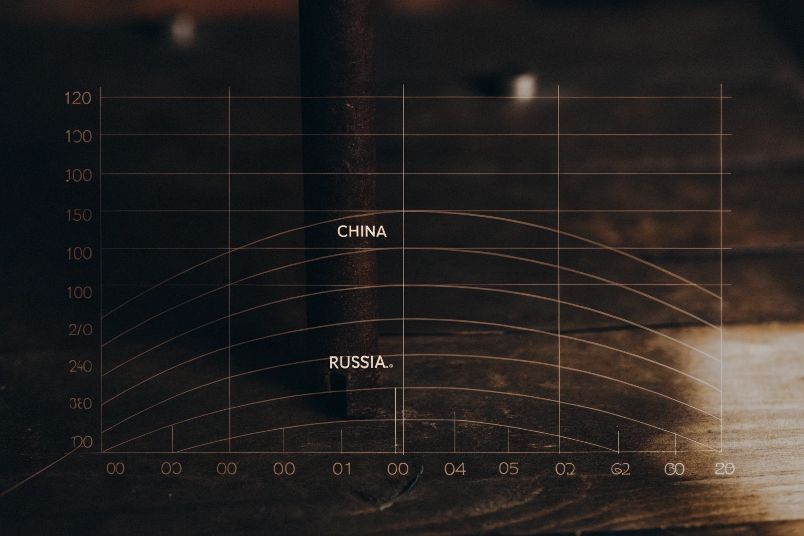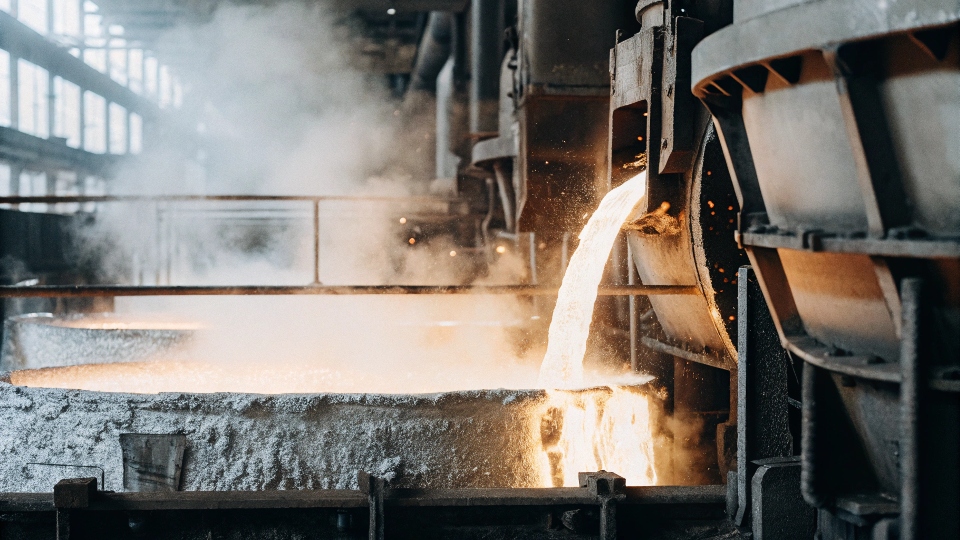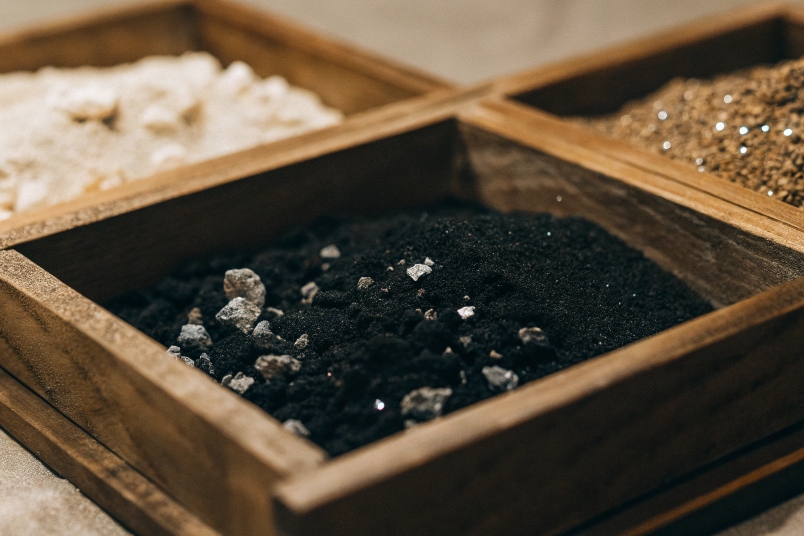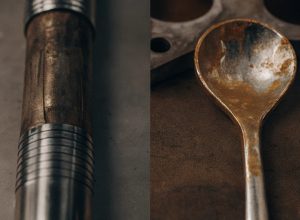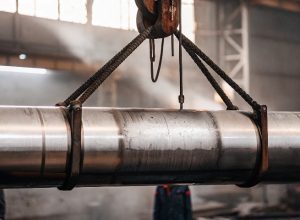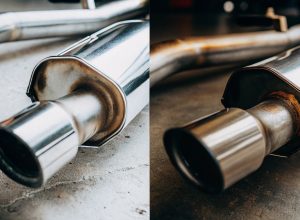Struggling with unstable titanium supply chains? These disruptions halt production and can damage your bottom line. Knowing where titanium comes from is the first step to securing your materials.
Titanium is not mined directly as a metal. It is extracted from minerals like ilmenite1 and rutile2, which are abundant globally. Key mining locations include Australia, South Africa, and China. The raw minerals are then converted into titanium sponge3, primarily in China and Russia.
Knowing the major mining countries is a good start. But for a business owner like Ahmed in Turkey, who distributes metal, the details are what matter. He needs to understand how regional production affects his inventory and pricing. The story of titanium is not just about geology, but also about processing, logistics, and global trade. Let’s explore the key questions that my clients often ask to help you build a more robust sourcing strategy.
Where is titanium mined in the USA?
Worried about relying only on overseas suppliers? Domestic mining in the U.S. seems like a secure option, but the full picture is more complex. Understanding U.S. sources helps manage expectations.
In the United States, titanium minerals are primarily mined from heavy mineral sand deposits located in Florida and Virginia. However, domestic mining does not meet the country’s total demand. The U.S. heavily relies on importing titanium sponge and finished products for its advanced industries.
I’ve worked with many American clients over the years, and a common theme emerges. They often find that sourcing directly from the U.S. mining output isn’t practical for their needs. The mining operations in Florida and Virginia extract the raw minerals, but there’s limited domestic capacity to convert these minerals into the high-purity titanium sponge required for demanding applications. This is where the global supply chain comes in. I remember a U.S. distributor for medical parts who was struggling with inconsistent material quality. By sourcing certified titanium ingots from our network in China, he gained direct control over purity and traceability, which was essential for his clients. This move simplified his supply chain and gave him a more reliable product.
The Reality of U.S. Titanium Sourcing
The key takeaway is that the U.S. is a major consumer of titanium, especially for aerospace and defense, but not a leading producer of the metal form. Companies there need a steady flow of high-grade material that is ready for milling and fabrication.
| Factor | Domestic Sourcing (Minerals) | Importing Ingots/Sponge |
|---|---|---|
| Material Form | Raw Minerals (Ilmenite/Rutile) | Processed Metal (Sponge/Ingots) |
| Quality Control | Requires further processing | Certified purity and grade |
| Supply Chain | Complex, multi-stage process | More direct, ready-to-use |
| Availability | Limited for high-purity metal | Large, stable global supply |
What country is the largest producer of titanium?
Do you need a large, consistent supply of titanium? Sourcing from smaller producers can introduce risks and volatility. Focusing on the largest producers can secure and stabilize your supply chain.
China is the world’s largest producer of titanium sponge, the primary form of the metal used for creating alloys. Russia is also a major producer. These two countries dominate global production and supply the raw titanium that fuels industries worldwide.
This is a significant advantage for my clients. Being based in Xi’an puts me at the doorstep of Baoji, known as China’s "Titanium Valley." This isn’t just a name; it’s a massive industrial cluster of smelters, processors, and manufacturers. This proximity allows me to work directly with the source. For example, just last month, I was on-site at a partner facility overseeing a production run of Grade 5 titanium bars for a European client. This hands-on approach ensures that materials meet exact specifications and helps prevent unexpected delays. This direct collaboration is something you simply can’t achieve when you are thousands of miles away. It turns a simple transaction into a true partnership.
Global Production Landscape
For a distributor like Ahmed, understanding the strengths of each major producing nation is crucial for stocking the right materials. China’s massive capacity is ideal for common industrial and medical grades, while other countries have their own specialties.
| Country | Key Strength | Primary Market Focus |
|---|---|---|
| China | High volume, cost-efficiency | Industrial, Medical, consumer goods |
| Russia | Advanced aerospace alloys | Aerospace, defense |
| Japan | High-purity, specialty alloys | Electronics, high-end automotive |
Why is titanium hard to mine?
Do you wonder why titanium carries a premium price? The high cost isn’t just about market demand. The production process itself is incredibly difficult, which explains its value.
Titanium isn’t hard to find in the ground. The challenge is in the processing. Titanium is extremely reactive with oxygen at high temperatures. This requires a complex, energy-intensive process in a controlled environment to extract pure metal without making it brittle and useless.
The core issue is titanium’s affinity for oxygen. If you try to smelt it like iron, it will absorb oxygen from the air and become contaminated. A tiny amount of oxygen contamination can make the final metal brittle and completely unusable for high-performance applications. This is why the entire extraction, known as the Kroll Process4, must happen inside a sealed reactor filled with an inert gas like argon. It’s a slow, batch-by-batch process that consumes an enormous amount of energy, which directly translates to a higher cost. For critical applications like aerospace or medical implants, the standards are even higher. The initial titanium sponge must be further refined to remove any remaining impurities.
Advanced Refining for Ultimate Purity
We use additional techniques to guarantee the quality our clients need. These extra steps are non-negotiable for ensuring safety and performance in sectors where failure is not an option.
| Technique | Purpose | Benefit for the Client |
|---|---|---|
| Kroll Process | Extracts titanium sponge from ore | Creates the base metal |
| Vacuum Arc Remelting5 (VAR) | Re-melts sponge in a vacuum | Removes impurities, creates uniform ingot |
| Copper Crucible Melting | Melts titanium without refractory contact | Prevents contamination for ultimate purity |
Where is titanium most commonly found on Earth?
Are you looking for stable, long-term titanium sources? Relying on a single region for supply is risky. Knowing the common global deposits is the first step to diversifying that risk.
Titanium is most commonly found within mineral sands in the form of ilmenite and rutile. These minerals are not rare and are concentrated in major deposits along the coastlines of Australia, South Africa, and India. China also has large hard rock reserves.
My primary role as a supply chain consultant is to build resilience for my clients. The first step is securing the raw material. Rutile is the more desirable mineral because it has a higher concentration of titanium, but ilmenite is far more abundant globally. A healthy supply chain needs both. Our partners maintain a diverse sourcing network, securing minerals from various global mines. This strategy protects us from regional supply disruptions, whether they’re caused by geopolitical issues, logistical bottlenecks, or natural events. This multi-source approach at the mineral stage ensures we have a consistent feedstock to produce the titanium sponge and ingots our clients depend on.
Strategic Sourcing for a Stable Supply
For a business like Ahmed’s in Turkey, a supply interruption from a single country could halt his entire operation. A diversified sourcing strategy is not a luxury; it is a necessity for long-term stability and predictable pricing.
| Sourcing Strategy | Advantage | Risk if Not Used |
|---|---|---|
| Single-Source | Potentially simpler logistics | High vulnerability to regional disruption |
| Multi-Source | Supply chain resilience, stable pricing | Requires more complex management |
By managing a portfolio of suppliers who source minerals globally, I provide my clients with a buffer against market volatility. This ensures a reliable flow of finished titanium, protecting their production schedules and profitability.
Conclusion
Understanding titanium’s journey from mineral to metal is vital. Knowing where it is mined and processed helps you build a resilient, smart, and cost-effective supply chain.
-
Discover the significance of ilmenite in titanium extraction and its global availability. ↩
-
Find out why rutile is a more desirable mineral for titanium production and its benefits. ↩
-
Understand the production process of titanium sponge, crucial for high-purity applications. ↩
-
Discover the Kroll Process, a critical method for extracting high-quality titanium. ↩
-
Learn how this technique enhances titanium purity, essential for high-performance applications. ↩



